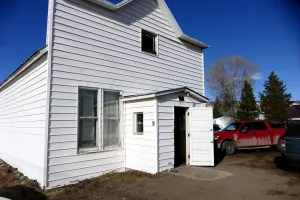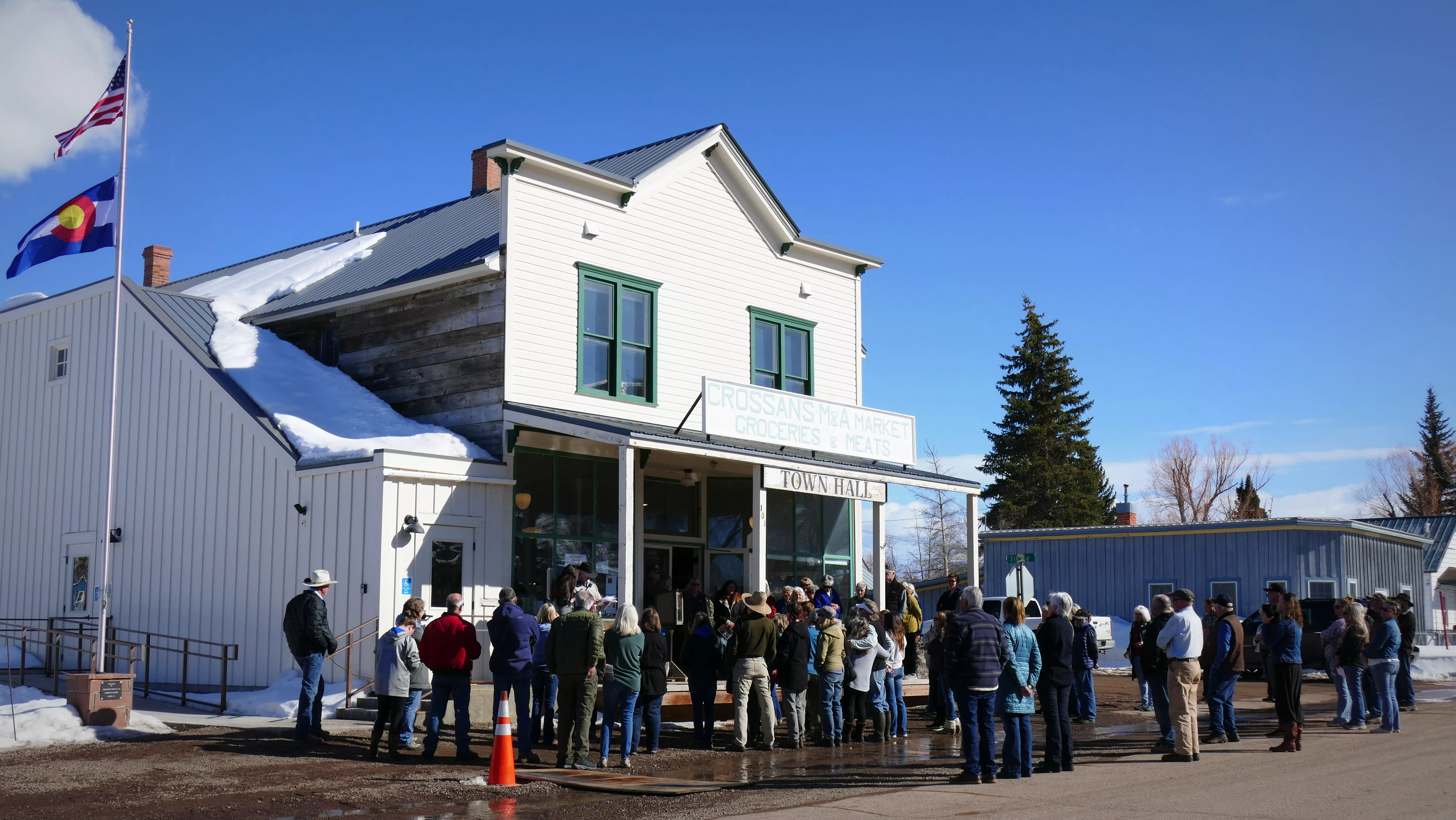
By Shannon Lukens.
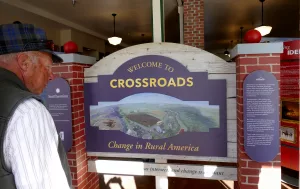
The Smithsonian is in Routt County. It’s a traveling exhibit called “Crossroads: Change in Rural America.”
The Smithsonian website says:
In 1900, about 40% of Americans lived in rural areas, By 2010, less than 18% of the U.S. population lived in rural areas. In just over a century, massive economic and social changes moved millions of Americans into urban areas. Yet, only 10% of the U.S. landmass is considered urban.
Many Americans consider rural communities to be endangered and hanging on by a thread—suffering from brain drain, inadequate schools, and a barren, overused landscape. Why should revitalizing the rural places left behind matter to those who remain, those who left, and those who will come in the future? Because there is much more to the story of rural America.
Crossroads: Change in Rural America offers small towns a chance to look at their own paths to highlight the changes that affected their fortunes over the past century. The exhibition will prompt discussions about what happened when America’s rural population became a minority of the country’s population and the ripple effects that occurred.
Despite the massive economic and demographic impacts brought on by these changes, America’s small towns continue to creatively focus on new opportunities for growth and development. Economic innovation and a focus on the cultural facets that make small towns unique, comfortable, and desirable have helped many communities create their own renaissance. The future is bright for much of rural America as small towns embrace the notion that their citizens and their cultural uniqueness are important assets.
The town of Yampa is hosting the exhibit at the historical Crossan’s M&A Market, through April 20. Yampa is one of ten Colorado towns hosting the exhibit, and the only community in northwest Colorado.
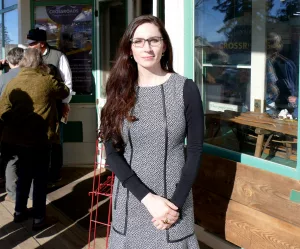
Here’s Marissa Perry on why Yampa was chosen.
“Yampa is one of the most historically preserved town footprints in the state. And it’s right up there with the Town of Crested Butte and Redstone.”
Perry says the Yampa community is special because of the people who have lived there for so many generations.
“Here, what makes us special is its all the people who live here. I think that the town of Yampa is probably 80-90% full-time residents. They live here; they’ve been here for generations. My family has been here since the late 1880s on both sides of my dad’s family. We have roots with (gives list of families). They group here today probably a good portion of them are cousins and we’re related in some form and fashion.”
Amanda Laman is the Deputy Clerk for the Town of Yampa.
“This is just an incredible opportunity to bring a lot of people in and have the world-renowned Smithsonian to provide a great exhibit.”
Saturday was the grand opening for the exhibit. It included tours of other historical Yampa buildings. Those pictures are below.
The exhibit emphasizes change in communities, and how those communities adjust to change. One quote said, “It will get better with change if we participate in it.”
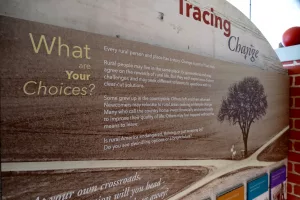
One sign at the entrance to the exhibit says:
Every rural person and place has a story. Change is part of that story.
Rural people may live in the same place for generations and may agree on the rewards of rural life But they each experience distinct challenges and may seek different solutions to questions with no clear-cut solutions.
Some grew up in the countryside. Others left and then returned. Newcomers may relocate to rural areas seeking a lifestyle change. Many who call the country home invest financially and emotionally to improve their quality of life. Others may feel trapped without the means to leave.
Is rural American endangered, thriving, or just scraping by? Do you see dwindling options or a bright future?
The Smithsonian Traveling Exhibit will be in Yampa through April 20. It’s at Crossan’s Market at 101 Main Street. Hours are on our website.
- Monday through Wednesday, 8 a.m. to 5 p.m.
- Thursdays and Fridays, 8 a.m. to 6:30 p.m.
- Saturdays, 10 a.m. to 4 p.m.
- Sundays, noon to 4 p.m.
Pictures from opening day of the exhibit:
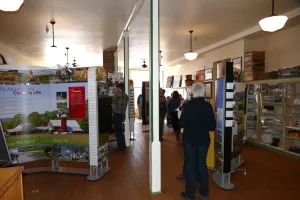
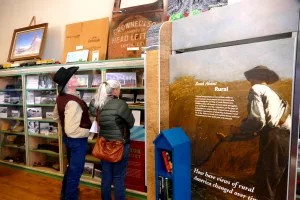
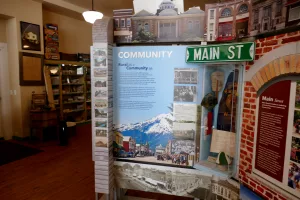
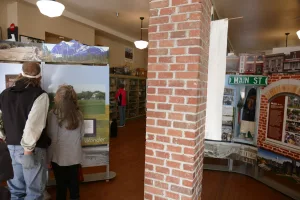
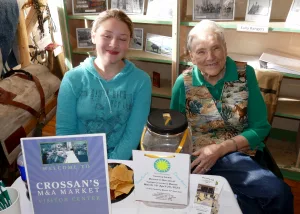
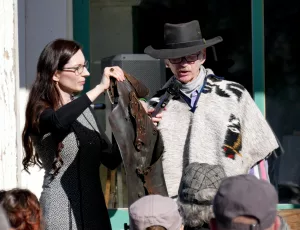
Pictures from the Egeria Masonic Lodge:
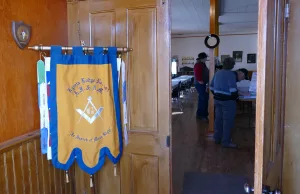

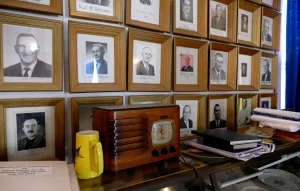

Pictures from the Yampa Museum, which used to be the bank:
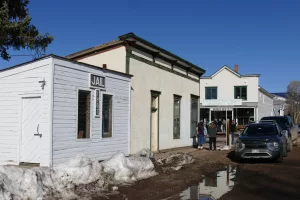
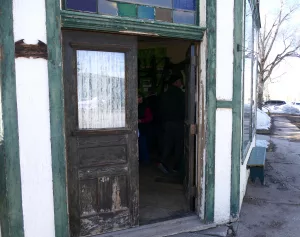
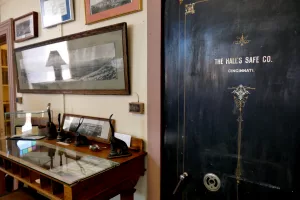
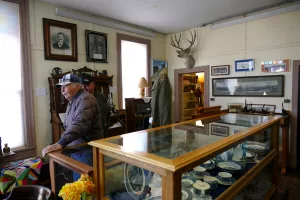
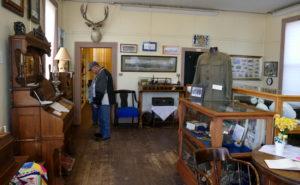
Pictures from the Ladies Aide Hall.
